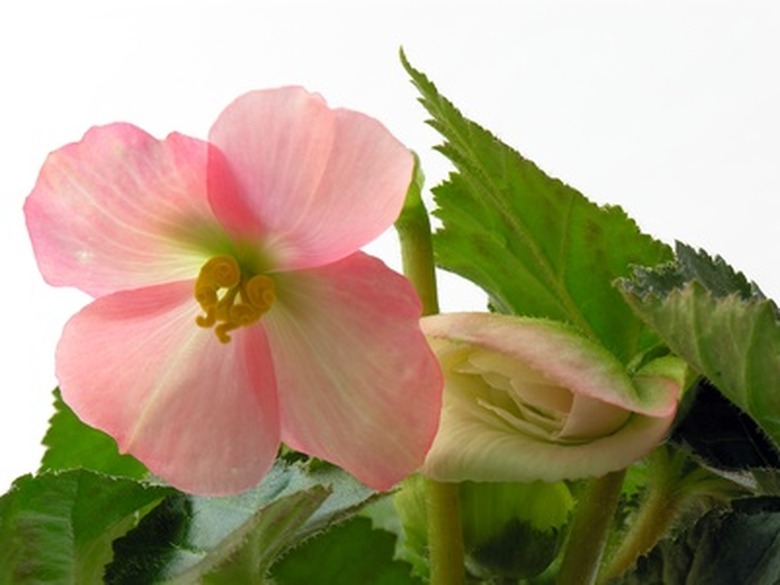How To Grow Begonias In Texas
Things Needed
- Wax-leaf begonia plants
- Well-rotted compost
- Organic granulated fertilizer
- Shovel
- Mulch
- Rake
- Hoe
The wax-leaf begonia (Begonia x semperflorens-cultorum) is a desirable blooming plant for Texas landscapes because they tolerate sun and shade as well as temperature extremes. It is a perennial plant along the coastal regions of Texas and grown as an annual in the rest of the state. The plants are usually purchased in the spring as bedding plants. Many varieties of wax-leaf begonias are available, blooming in red, yellow, orange, pink or orange. Some varieties have dark green leaves while others may have red, burgundy or even variegated leaves.
Step 1
Locate an area in the garden that receives from four to six hours of sun each day. Most varieties tolerate some shade but bloom best with at least four hours of direct sunlight. In Texas, exposure to morning sun is best because of the intense heat of the afternoon sun.
- The wax-leaf begonia (Begonia x semperflorens-cultorum) is a desirable blooming plant for Texas landscapes because they tolerate sun and shade as well as temperature extremes.
Step 2
Clear the area of weeds and rocks. Spread a 2-inch layer of well-rotted compost over the soil along with the required amount of organic granulated fertilizer. The required amount can be found by reading the fertilizer container label. Use a hoe or rake to work the compost and fertilizer into the top 3 inches of soil. Rake the area smooth before planting the wax-leaf begonia plants.
Step 3
Plant the wax-leaf begonia plants 6 to 8 inches apart for a border. For complete coverage, plant the next row of plants 6 to 8 inches from the other plants, but between the other plants, in what is referred to as a checkerboard fashion. If covering a large area, plant the first row in the back row and work toward the front of the bed to avoid stepping on the just-completed row.
- Clear the area of weeds and rocks.
- Use a hoe or rake to work the compost and fertilizer into the top 3 inches of soil.
Step 4
Spread a 1-inch layer of mulch around the root base and in between the wax-leaf begonia plants to conserve moisture, control weeds and make the planting bed attractive.
Step 5
Add water as needed to keep the planting bed moist, but not wet, until the plants are established and actively growing. Then water deeply once a week during the hottest part of the season to encourage deep root growth. Don't allow the plants to wilt from lack of moisture, because some of the foliage may not recover and will have to be removed.
